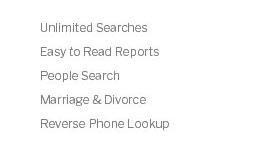 |
 |
|---|
|
|
|---|
 |
 |
 |
 |
|---|---|---|---|
 |
 |
 |
|
 |
|||
 |
 |
 |
|
 |
|||
 |
 |
 |
|
 |
|||

|
c8hn4d9krms Understanding NYS Criminal Records: Important ConsiderationsThe concept of NYS criminal records is both fascinating and essential, as it plays a critical role in the intricate balance between justice, privacy, and public safety. These records, which document the various interactions individuals have had with the criminal justice system in New York State, are maintained meticulously by state agencies. They encompass a wide array of information, ranging from arrests, charges, and court proceedings to convictions and sentences. Understanding how these records are created, maintained, and accessed can provide significant insights into the broader criminal justice system. One of the most crucial aspects to consider about NYS criminal records is their accessibility. In an era where information is readily available at our fingertips, it might be surprising to learn that accessing these records is not as straightforward as it might seem. The New York State Division of Criminal Justice Services (DCJS) serves as the central repository for these records, ensuring that they are kept accurate and up-to-date. However, due to privacy concerns and the sensitive nature of the information contained within, not all records are open to the public. Instead, access is generally restricted to certain authorized entities such as law enforcement agencies, employers conducting background checks, and sometimes the individuals themselves who seek to review their own records. One might wonder why such restrictions exist. The answer lies in the need to balance transparency with privacy. On one hand, making criminal records easily accessible to the public can serve as a deterrent to crime, promote transparency within the justice system, and aid in the protection of public safety. On the other hand, unrestricted access could lead to potential misuse of information, unfair stigmatization, and could adversely affect individuals who have served their time and are trying to reintegrate into society. Therefore, the state adopts a careful approach, weighing the benefits of transparency against the rights of individuals to move past their criminal history. When we delve deeper into the intricacies of these records, we see how they reflect broader societal trends and issues. For instance, disparities in criminal records can sometimes highlight systemic issues such as racial bias or socioeconomic factors that disproportionately affect certain communities. These records, therefore, become more than just a ledger of legal history; they become a narrative of societal challenges and areas needing reform. Moreover, the impact of NYS criminal records extends into various facets of life, including employment, housing, and education. Many employers conduct background checks as part of their hiring process, which often includes a review of criminal records. This can significantly impact an individual's employment prospects, especially in fields where security and trust are paramount. Similarly, landlords may review these records when considering potential tenants, and educational institutions might take them into account during admissions. While such measures are often taken with good intentions, they can sometimes perpetuate cycles of disadvantage, making it challenging for individuals to overcome past mistakes and build a new life. Thus, it becomes clear that while NYS criminal records serve vital functions within the justice system and society at large, their management and accessibility must be handled with care. There is an ongoing debate about how best to reform these systems to promote fairness and rehabilitation while ensuring public safety. Some advocate for the sealing or expungement of records under certain conditions, arguing that individuals should not be perpetually punished for past mistakes, especially if they have demonstrated rehabilitation. Others emphasize the need for transparency and accountability, suggesting that public access to these records can drive positive social change. In conclusion, NYS criminal records are a complex yet crucial element of the justice system. They embody the delicate balance between safeguarding individual rights and ensuring public safety. As we continue to navigate these challenges, it is imperative to engage in thoughtful discussions and consider reforms that align with the evolving values of justice and equity. Only through such efforts can we hope to create a system that is both fair and effective, allowing individuals to move beyond their past while maintaining a society that is informed and secure. https://newyorkcourtrecords.us/criminal-court-records/
Members of the public can obtain criminal court records by searching for records using alternative record retrieval services. https://www.reddit.com/r/trueprivinv/comments/1f3fofy/new_york_state_criminal_history/
I have no idea how background check companies claim a comprehensive search when New York criminal records are near impossible to uncover.
|
|---|